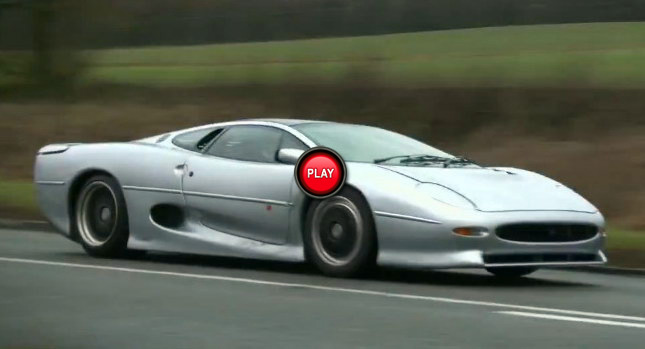In 1988, Jaguar unveiled a new concept at the NEC Auto Show in Birmingham. It was a study for a lightweight, mid-engined supercar to compete against the Ferrari F40 and the Porsche 959.
A 6.2-liter V12 engine from the XJR-9 endurance racer, an all-wheel drive system, scissor-style doors and a target of reaching 220 mph (355 km/h), which gave the car its XJ220 moniker, wetted the affluent customers’ appetite.
Due to massive demand, Jaguar tasked Tom Walkinshaw Racing (TWR) with developing a production version of what was originally meant to be a concept or, at best, a racing car.
The finished product was announced in 1989 and, despite the £361,000 price tag and the hefty £50,000 deposit required to get on the waiting list, Jaguar, which originally intended to make just 350 cars, received a massive 1,500 orders.
Then the 1992 recession came and the supercar market crashed so the XJ220 production was limited to the original 350 units.
In spite of similar looks, the finished product was radically different to the concept. The V12 was replaced by a twin-turbo 3.5-liter V6 derived from that of the Austin Metro 6R4 rally car and the Jaguar XJR-10 and -11 endurance racers. The all-wheel drive system and the scissor doors were also binned and the production XJ220 came with normal-opening doors and rear-wheel drive.
These changes resulted in serious criticism and Jaguar’s supercar never received the same status as its competitors. That’s despite its 542HP output, 3.6-second 0-60 mph (0-96 km/h) sprint and 213 mph (343 km/h) top speed that made it the fastest car in the world as the F40 did 200 mph and the McLaren F1 was still in the making.
Autocar editor Andrew Frankel, who had tested the XJ220 20 years ago, believes that it’s “the most maligned supercar in history”. That’s why he borrowed one to set the record straight.
How does it feel two decades after its launch? You can find out by watching the video after the break.
By Andrew Tsaousis
VIDEO



